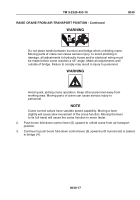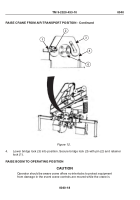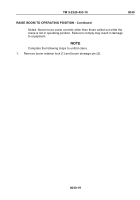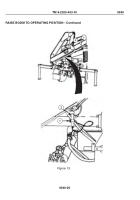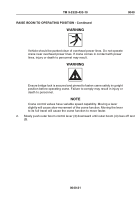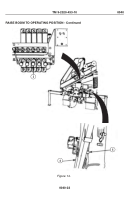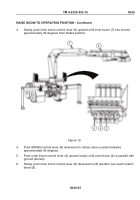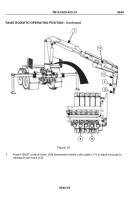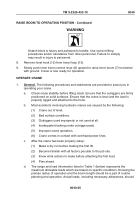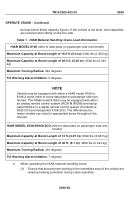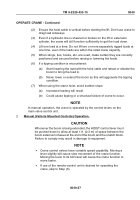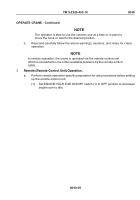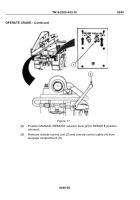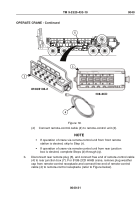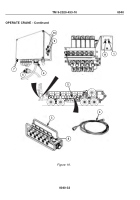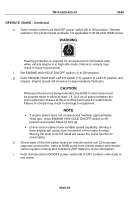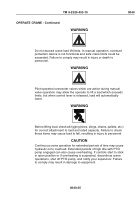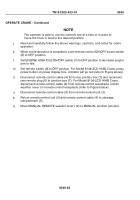TM-9-2320-433-10 - Page 261 of 964
OPERATE CRANE - Continued
(2)
Ensure the hoist cable is vertical before starting the lift. Don't use crane to
drag load sideways.
(3)
Even if a hydraulic line is sheared or broken on the lift or extension
cylinder, the crane will still function sufficiently to get the load down.
(4)
Lift one load at a time. Do not lift two or more separately rigged loads at
one time, even if the loads are within the rated crane capacity.
(5)
When slings, ties, hooks, etc. are used, make certain they are correctly
positioned and secured before raising or lowering the loads.
(6)
If a tipping condition is encountered:
(a)
Start lowering the load with the hoist cable and retract or elevate the
boom to bring the load in.
(b)
Never lower or extend the boom as this will aggravate the tipping
condition.
(7)
When using the crane hoist, avoid sudden stops:
(a)
Increased loading will result.
(b)
Could cause tipping or a structural failure of crane to occur.
NOTE
In manual operation, the crane is operated by the control levers on the
main valve control unit.
2.
Manual (Vehicle Mounted Controls) Operation.
CAUTION
Whenever the boom is being extended, the HOIST control lever must
be pushed down to allow at least 1 ft. (0.3 m) of space between the
boom extension sheave at the end of the boom and the snatch block.
Failure to comply may result in damage to equipment.
NOTE
•
Crane control valves have variable speed capability. Moving a
lever slightly will cause slow movement of the crane function.
Moving the lever to its full travel will cause the crane function to
move faster.
•
If use of the remote-control unit is desired for operating the
crane, skip to Step (3).
TM 9-2320-433-10
0040
0040-27
Back to Top

